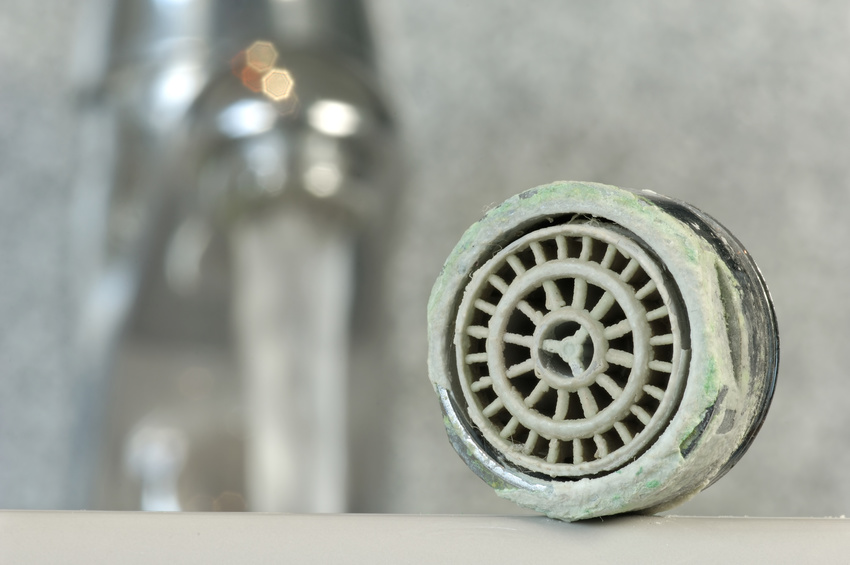Questions and answers on the subject: Hard water and lime
What are lime, calcium carbonate, CaCO3?
Lime, calcium carbonate and CaCO3 are different names for the same thing. From a chemical point of view, lime is a carbonic acid salt. In the technical area, there is also the term scale. This colloquially means the most lime that has become solid in the boiler.
And how does the lime get into the drinking water?
The carbon dioxide in the air (CO2) combines with the water droplets (H2O) when it rains and produces carbon dioxide (H2CO3).
Next, the carbonated water combines with lime from rock layers in the soil to form liquid calcium bicarbonate Ca(HCO3)2.
This hard water now passes through the groundwater into our drinking water circuit and the lime may precipitate under certain conditions (heat, pressure, evaporation). This lime then appears as calcification in coffee machines, washing machines, boilers again.
How are the hardness ranges of the water divided?
The four areas of hardness formerly used in Germany have been divided into three areas of hardness as part of EU harmonization. Since then, the concentration of total hardeners in mmol / l has been decisive for the hardness limits.
|
hardness range |
mmol/l |
°dH |
Calcium concentration mg / l |
|
soft |
< 1,5 |
< 8,4 |
< 80 |
|
middle |
1,5 bis 2,5 |
8,4 - 14 |
80 - 120 |
|
hard |
> 2,5 |
>14 |
> 120 |
Table 1, hardness range 1 - 3
When should you do something about lime in the water?
With soft water you do not have to take any action. For medium-hard water, starting at a temperature of 60 ° C, it is recommended to do something. For hard water, softening should always be considered for all temperature ranges.
What can happen if hard water is not treated?
In the house water pipes, in which cold water is led, there are usually no problems.
However, even at the water exit point, where hot water is also removed, calcare taps or shower heads and reduce the water pressure, because lime precipitates.
In hot water pipes and z. B. Heat exchangers already calcify the pipes and walls: By increasing the temperature of the lime-carbonic acid balance is disturbed and calcium carbonate precipitates and sets. This happens already from a water temperature of 30 ° C. The precipitating lime then leads to the known and dreaded damage and consequential costs. Even with 1 mm limescale on heating rods, the heating capacity is reduced by 10%. With 5 mm lime by 30% and with 11 mm by approx. 50%.
Important information we also give in the article Anti limescale and Decalcification options for hard water.
What is water softening through ion exchange?
This refers to ion exchange systems for softer water that work with a carrier resin, which is traversed by the water. Calcium and magnesium ions of the water are bound to the resin and sodium ions are released to the water.
Modern plants, such as the Delfin or Delfin Mega plant, are only operated with "economy salting" and the replacement resins are automatically sterilized in cycles.
The ion exchange process is the most proven method to reduce lime in the water. Unfortunately, it still has a bad reputation among home users because the facilities of the 1970's and 80's of the past century were inadequate. These dosed imprecisely and had no Sparbesalzung. Flavor changes were the result and there was corrosion damage to pipelines due to excess carbon dioxide.
Advantages and disadvantages of ion exchange systems or water softening systems:
Advantages
- Protection of the entire home technology and better taste of food and drinks such as tea, espresso, ...
- Enormous savings potential through protection of the building services and saving of detergents to a not inconsiderable extent
- sophisticated technology
- many devices are DVGW certified
- Lime is actually taken from the water
- very good price performance ratio for the equipment we offer
- The salt tablets can be refilled even for little money
Disadvantages
- The sodium content of the drinking water increases depending on hardness reduction, which can be a disadvantage for sensitive persons. However, the intake of minerals over the drinking water is greatly overestimated!
- At very high dosage, free carbon dioxide is produced and the pH is then significantly reduced; Pipes can then be attacked
- Follow-up costs by refilling the salt tablets, by disinfecting the resin and by very rare necessary resin changes
- For installation and maintenance an installer is required
















































